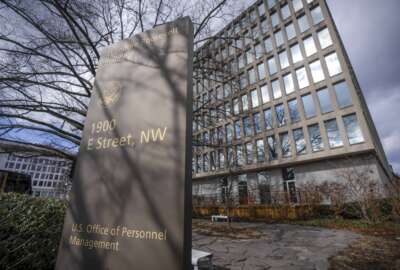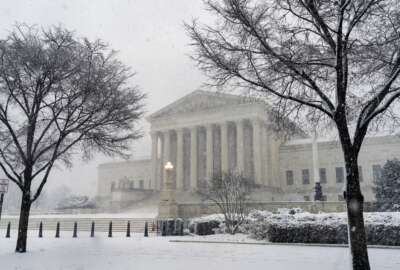NARA declassification chief tackles backlog
For years, a huge backlog of government agency documents in need of declassification has piled up at the National Archives and Records Administration. Now, however,...
wfedstaff | June 3, 2015 9:02 am
By Max Cacas
Reporter
Federal News Radio
And you think you have a huge in-box?
On June 7th of this year, Sheryl Shenberger began her new job as director of the new National Declassification Center at the National Archives and Records Administration. Upon her arrival, she began to tackle one of the biggest jobs in her new position: dealing with a backlog of over 400 million federal agency documents with varying kinds of security classifications, and making as many as possible available to the public.
By the end of 2013.
Yesterday, Shenberger made her first appearance before the Public Interest Declassification Board, a Presidential advisory panel which advises the White House on declassification matters. The Board met in the U.S. Capitol Visitors Center.
Although she’s new to this job, Shenberger says she’s hardly new to the community of government and citizen experts in the area of document declassification
“While I was with the CIA Declassification Center 25-year program, I worked…to get the OSS (Office of Strategic Services, a World War Two-era predecessor to the Central Intelligence Agency) records open to the public. It was a big endeavor, that took a number of months to explain to people that, not only was the material old, it was already out there.”
Shenberger says her other work in the area of classified document handling makes her eminently qualified for this job.
“I have overseen special reviews of Watergate, and (former Secretary of State Henry) Kissinger material. And I was point of contact for the government review of the Presidential libraries referrals through the remote capture program.”
Shenberger will need the benefit of all that expertise as her new office goes after NARA’s long-festering declassification backlog.
“We have a deadline for 410 million pages to be done by the end of 2013. So, no matter what, all of this stuff has to be treated, all of the valuable, and the not so valuable, all of it has to have been put out for the public, so that kind of guides me when I look at priorities.”
While acknowledging the enormity of the task before her, Shenberger told the PIDB that she also recognizes that within the backlog are clusters of historically significant documents related to important events which should be separated, and made available sooner to historians and interested members of the public.
Shenberger isn’t alone in her new endeavor. Along with NDC staff from the National Archives, Shenberger says she is also working with a growing team of document declassification experts working for the federal agencies whose paper eventually ends up in the National Archives
As she learns her way around her new job, Shenberger is also hearing the concerns from both the historical, academic researchers and the national security professionals who make up the declassification community.
Among those concerns: expedited processing for other historic documents, including the records of the late President John Kennedy, the 9/11 Commission, and from some of the Presidential libraries. In addition, they’ve been asked to speed up declassification of records from past Secretaries of Defense and their staffs.
Asked for her own assessment of the challenges ahead, Shenberger says she wants to give new processes at the National Declassification Center time to do their work and stay in constant touch with her staff to make sure everyone is whittling down that 410 million page declassification backlog by the New Year’s Eve 2013 deadline.
——
Related link:
National Archives: National Declassification Center blog
(Copyright 2010 by FederalNewsRadio.com. All Rights Reserved.)
Copyright © 2025 Federal News Network. All rights reserved. This website is not intended for users located within the European Economic Area.





